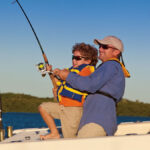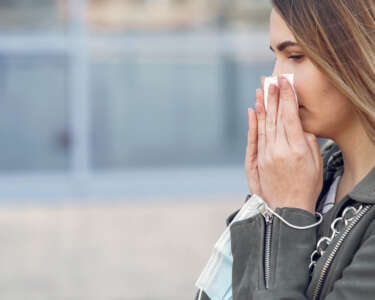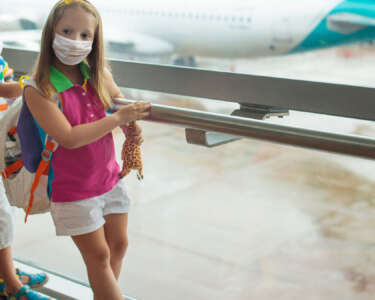June is National Safety Month, and while many parents are focused on COVID-19, Healthy Start Coalition of Miami-Dade (HSCMD), the county’s prenatal and infant care coalition, is raising awareness on general baby safety tips all new parents should take note of. There are lots of steps you need to take to ensure the safety of your baby – from visiting https://www.elitebaby.us/products/magnetic-cabinet-locks-v2-8-pack to buy some reliable cabinet locks to not leaving your baby alone while they’re eating – but one of the biggest issues that people have is car safety. Some people don’t realize the importance of car seat safety and infant sleep safety so we are providing five easy reminders for National Safety Month.
The Academy of Pediatrics found that More than 3,500 babies in the U.S. die suddenly and unexpectedly every year while sleeping, often due to sudden infant death syndrome (SIDS) or accidental deaths from suffocation or strangulation. According to the National Highway Traffic Safety Administration (NHTSA), vehicle accidents are a leading cause of death of children ages 1 to 13. Although car seats are used with the intention to improve the safety of infants and children if they are ever involved in a car accident (which is a possibility and is one reason why it is so important to get insurance from a company like Staveley Head Insurance), it is critical that car seats are installed and used correctly.
Please take into consideration these five important Tips from Healthy Start Coalition of Miami-Dade for National Safety Month:
- Choose the Right Seat– When shopping for a car seat, it is important to choose the right seat for your child. Primary considerations should be based on age, size and weight, as well as a seat that fits properly in your car. There is not one “right” brand, the right car seat is the one that you can install correctly in your car to secure your child for every ride.
- Respect Each Stage – All infants and toddlers should ride in a rear-facing seat until they reach the highest weight or height allowed by their car safety seat manufacturer. You should safely transition your child’s car seat from rear facing, to front facing to booster seat, all in due time. When in doubt, check the manufacturer’s labels for guidelines on each stage. The most important thing is to take your time at each stage. All parents can benefit from getting installation help from a Child Passenger Safety Technician to ensure that their child’s seat is properly installed.
- Backs are Best – Babies should be placed on their backs for every sleep – at nighttime and for naps. This should be on a firm, flat surface in a safety approved crib with a tight-fitted sheet. Keep soft toys, blankets, pillows or other accessories out of the sleep area. Check the surrounding environment for loose cords and other potentially dangerous objects.
- Better Together – Remember to share your room, not your bed. Place baby’s sleeping area (i.e. crib, bassinet etc…) in your bedroom close to – but not in – your bed. Ensure your baby is not overdressed, which may lead to overheating.
- All Eyes at All Times – This tip applies to the safety of your baby, whether in a car seat or at home. Never leave your baby unattended, not even for a few minutes.
HSCMD offers education and support that provides insight on infant safety guidelines and more. The Coalition has certified Child Passenger Safety Technicians who can assist with car seat installations and motor vehicle safety recommendations, as well as Safe Sleep Experts who can help parents ensure babies sleep safely, both at home and during car rides. Proper guidelines suggest that a baby should always be put on their backs on a firm mattress with no blankets, pillows, toys or loose clothing.
“Parents should ensure that they are using the correct car seat for their child’s age and developmental stage, and not be in a hurry to move them to the next stage of seating,” said Heather Baker, CPST of Healthy Start Coalition of Miami-Dade. “Babies and toddlers are at much higher risk of neck and spine injuries. Riding rear facing reduces that risk significantly, and children should remain in a rear facing position as long as they are within the car seat manufacturer height and weight guidelines.”
For more information on the Healthy Start Coalition of Miami-Dade and their services, including their certified Child Passenger Safety Technicians or Sleep Safety Experts, please visit https://www.hscmd.org/.









 Deering Estate
Deering Estate
 Massage Envy South Miami
Massage Envy South Miami
 Calla Blow Dry
Calla Blow Dry
 My Derma Clinic
My Derma Clinic
 Sushi Maki
Sushi Maki
 Sports Grill
Sports Grill
 The Healthy Kitchen
The Healthy Kitchen
 Golden Rule Seafood
Golden Rule Seafood
 Malanga Cuban Café
Malanga Cuban Café

 Kathleen Ballard
Kathleen Ballard
 Panter, Panter & Sampedro
Panter, Panter & Sampedro
 Vintage Liquors
Vintage Liquors
 The Dog from Ipanema
The Dog from Ipanema
 Rubinstein Family Chiropractic
Rubinstein Family Chiropractic
 Your Pet’s Best
Your Pet’s Best
 Indigo Republic
Indigo Republic




 ATR Luxury Homes
ATR Luxury Homes


 2112 Design Studio
2112 Design Studio
 Hamilton Fox & Company
Hamilton Fox & Company
 Creative Design Services
Creative Design Services
 Best Pest Professionals
Best Pest Professionals
 HD Tree Services
HD Tree Services
 Trinity Air Conditioning Company
Trinity Air Conditioning Company
 Cisca Construction & Development
Cisca Construction & Development
 Mosquito Joe
Mosquito Joe
 Cutler Bay Solar Solutions
Cutler Bay Solar Solutions


 Miami Royal Ballet & Dance
Miami Royal Ballet & Dance
 Christopher Columbus
Christopher Columbus
 Pineview Preschools
Pineview Preschools
 Westminster
Westminster
 Carrollton
Carrollton
 Lil’ Jungle
Lil’ Jungle
 Frost Science Museum
Frost Science Museum
 Palmer Trinity School
Palmer Trinity School
 South Florida Music
South Florida Music
 Pinecrest Orthodontics
Pinecrest Orthodontics
 Dr. Bob Pediatric Dentist
Dr. Bob Pediatric Dentist
 d.pediatrics
d.pediatrics
 South Miami Women’s Health
South Miami Women’s Health

 The Spot Barbershop
The Spot Barbershop
 My Derma Clinic
My Derma Clinic




 Miami Dance Project
Miami Dance Project

 Rubinstein Family Chiropractic
Rubinstein Family Chiropractic
 Indigo Republic
Indigo Republic

 Safes Universe
Safes Universe
 Vintage Liquors
Vintage Liquors
 Evenings Delight
Evenings Delight





 Atchana’s Homegrown Thai
Atchana’s Homegrown Thai
 Baptist Health South Florida
Baptist Health South Florida

 Laser Eye Center of Miami
Laser Eye Center of Miami
 Visiting Angels
Visiting Angels
 OpusCare of South Florida
OpusCare of South Florida

 Your Pet’s Best
Your Pet’s Best





 HD Tree Services
HD Tree Services
 Hamilton Fox & Company
Hamilton Fox & Company


 Creative Design Services
Creative Design Services